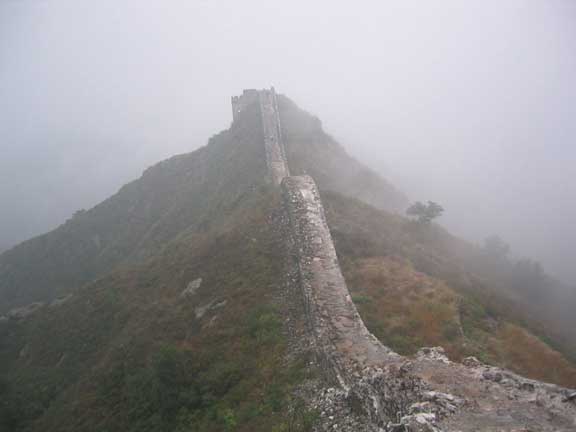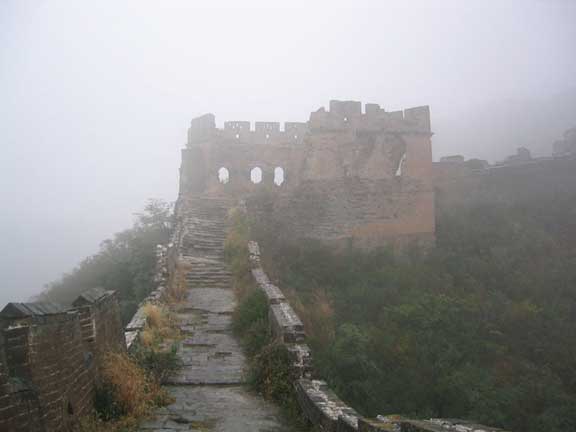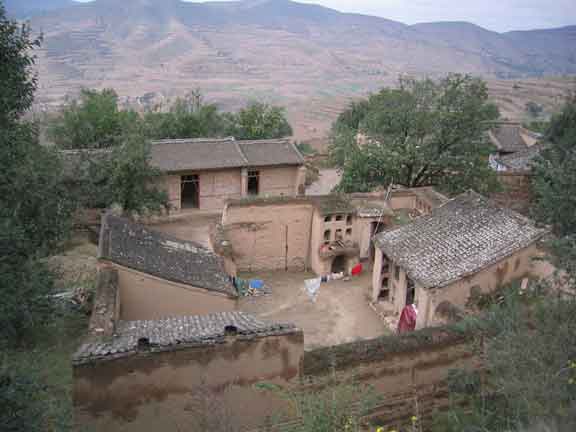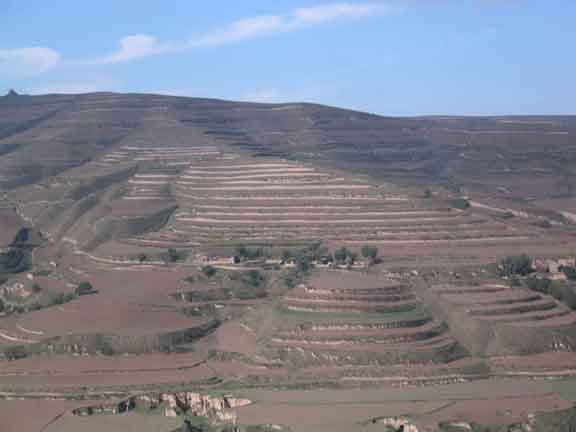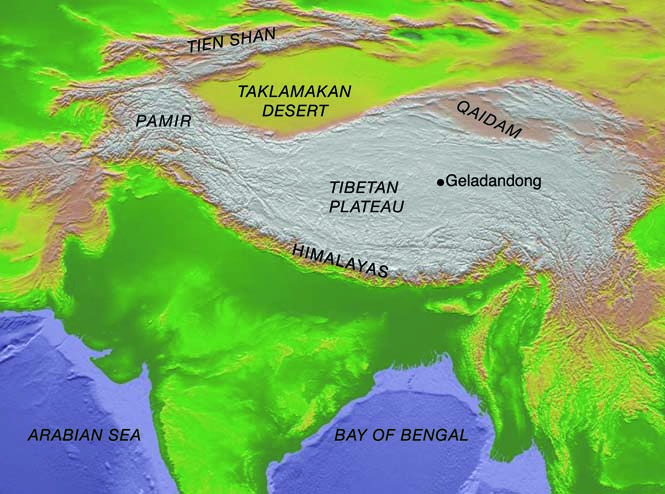
Climate and Environmental variability, Mt. Gelandondong, Tibetan Plateau
Mt. Geladandong Ice Cores
Susan Kaspari and Bjorn Grigholm: UMaine
Qianggong Zhang, Shichang Kang, Feng Chen, Qinghua Ye, and Zhiyuan Cong: Joint Key Laboratory of Cryosphere and Environment, P.R. China
September 24 to November 15, 2005
Mt. Geladandong (33f 12′ N, 91f 09’E, 5800 m) is located in the Tanggula Mountains in the central region of the eastern Tibetan Plateau, and is the source region of the Yangtze river (the third longest river in the world). Grassland steppes lie to the south and east, and the regions to the north and west are arid. Summer precipitation is dominated by plateau monsoon circulation (Murakami, 1976), and winter precipitation is limited, though occasional large snowfall events result from westerly disturbances (Seko and Takashashi, 1991). Previous studies suggest that the Tanggula Mountains mark the northern boundary of the influence of the South Asian monsoon, and that north of this range recycled rainfall from continental precipitation is the dominant process (Tian et al, 2001; Araguas-Araguas et al., 1988).
In the spring of 2004 an 87 m ice core was recovered from the South Geladandong Flat Topped Glacier in collaboration between the Climate Change Institute and the Joint Key Laboratory of Cryosphere and Environment (in association with Cold and Arid Regions Environmental and Engineering Research Institute (Lanzhou), Institute of Tibetan Plateau Research (Beijing), and Chinese Academy of Sciences/Chinese Academy of Meteorological Sciences (Beijing), China). This fall we will be returning to Geladandong to identify another ice core drilling site, and intend to recover an additional ice core. This core, in addition to the 2004 Geladandong ice core, will be used to investigate the climate and environmental variability of the Tibetan Plateau during the late Holocene. Dr. Shichang Kang from the Tibetan Plateau Institute is the leader of the expedition.
Plateau during the late Holocene. Dr. Shichang Kang from the Tibetan Plateau Institute is the leader of the expedition.
September 27, 2005
Susan writes from Beijing:
Just a note to let you know we arrived in Beijing yesterday. Our flights went smoothly, and customs was super easy. We had dinner last night with Shichang, Qinghua, and a number of students. We will be spending another day or two in Beijing, and will then fly on to Lanzhou. I’m giving a talk this afternoon at Shichang’s institute about the Everest record. Send our hellos to everyone.
September 30, 2005
Susan writes from Beijing:
Bjorn and I are doing well. We’ve been getting some work done, and yesterday we took a day trip with two of the graduate students from the Institute of the Tibetan Plateau to visit the Great Wall. Much of the area that we visited dates back about 400 years. It was exciting to walk on historic sections of the wall, compared to some areas that have been rebuilt in recent decades for tourism. We passed 30 watchtowers during our three hour walk. It was a rainy day, so the visibility was limited, but it was enjoyable to see the wall rise up from the mist. Last night we celebrated Qinghua’s birthday. Tomorrow is China’s National Holiday, and we will head to Lanzhou on Sunday.
October 4, 2005
Bjorn writes from Lanzou:
Susan and I have been in Lanzhou the last few days helping Shichang and his graduate students prepare for the expedition, which is scheduled to leave Lanzhou on Oct. 8th. Our plan for today and the next couple of days is to clean and set up the ice core melt room. Hopefully, we can finish before we leave. It would be ideal to be able to start melting immediately when we get back from Geladandong. Besides working, we have been treated to many outstanding dinners and been able to try a lot of local dishes, such as Lanzhou noodles. We also had the opportunity to visit Shichang’s home town. It is a beautiful little village located in the mountains about 200km south of Lanzhou. It was amazing to see how farmers had terraced the mountain slopes to grow their crops.
October 10, 2005
Susan writes from Lazhou:
Today the group is leaving Lanzhou and heading toward the Tibetan Plateau. Nine people left this morning – one group in a jeep, and the other group in a large truck that is carrying our equipment and food. The remaining six of us, including Bjorn and me, will catch an evening train to Golmud. The train ride should be about 18 hours. In Golmud we will buy some additional supplies for the field, and stock up on lots of vegetables. Golmud is a good intermediate stop before we climb up onto the Tibetan Plateau, since the elevation of the
plateau is over 14,000 ft.
Shichang went to Lhasa a few days ago to collect some additional equipment, and we will meet him in a few more days near Tanggula Pass near the Tibetan border. From there we will head off of the highway and towards Mt. Geladandong. We are keeping our fingers crossed that the ground will be solid enough for our trucks to pass over- if the ground is very soft it will make the travel very challenging. Otherwise everyone has been busy preparing their equipment for the field, and we have been preparing the continuous melter lab for melting the ice core.
October 12, 2005
Bjorn writes from Golmud:
The train ride from Lanzhou to Golmud was very pleasant and gave us the opportunity to see some of China’s vast desert areas. Golmud is quite unlike the surrounding arid landscape. It is full of trees that densely line the sides of streets. The city has a population of about 200,000 people and is at an elevation of 2800m. The expedition team has spent the last two days here buying food supplies for the trip to Mt. Geladandong. Tomorrow, we will take a jeep to Yushu, a town in the southern part of Qinghai province. The elevation there is around 4600m. The drive will take about 10 hours and will take us through the beautiful areas of the Northern Tibetan Plateau.
October 17, 2005
Susan reports from the Tibetian Plateau:
We arrived on the Tibetan Plateau on the 13th and spent a day there to allow people to acclimatize because we were at about 14,600 feet. On Saturday, we began our journey off the highway towards Geladandong. We are traveling on rough roads over the permafrost. Our group consists of 2 trucks, and some jeeps. Our large truck has gotten stuck several times in the soft soils. We have already gone ahead with several jeeps to scout the way, and we think we should be able to get the trucks through to the campsites. Right now we are camped at 16,000 feet about 15 kilometers from our final destination.
Tomorrow morning when the ground is frozen, we will try again to go on. If the truck becomes stuck again, we will go on in with a few of jeeps to locate a drill site, set up camp and begin digging some snow pits. Our camp will be about 8 kilometers from our drill site.
It is very beautiful here as you can imagine. We have see some nomadic peoples traveling with their yaks, which was very interesting. We have also seen an abundance of wildlife, hawks, foxes and Tibetan antelope.
We are all doing well and send our greetings to everyone at home. I will try to report in again toward the end of the week.
October 20, 2005
Susan reports from base camp, Geladandong:
We arrived at our base camp on the 18th with all of our vehicles and equipment. We have spent the last couple of days hiking up the glacier to the drill site carrying the equipment and supplies. Bjorn and I almost made it all the way up yesterday before the snow became too deep. Today, Shichang and the porters went up with snow shoes and made it all the way in to the site at 19,000 feet. We will move more equipment tomorrow, and hope to have everything set up so that we can start drilling by Saturday evening. It’s a lot of hard work hauling the equipment up the remaining distance to the drill site, and we are all a bit tired, but feeling fine and anxious to get to work.
It is beautiful up here, and we are seeing quite a bit of wild life. There are yaks and many huge hawks soaring around. The dogs from a nearby village have begun to come around to visit us. They are very shy, but I made friends with one of them, so I am getting some doggy affection. (For those who do not know me, I really love dogs, and miss my buddy Forest very much.) We know these dogs are from the village because they all wear a Tibetan collar which is very colorful and has fringe.
Tonight we had a bit of a celebration. Sunday is my birthday, and since we will be rather busy, the crew fixed a lovely dinner for me including wonderful dumplings and even a cake. We sang songs and did the “Hokey Pokey” after dinner.
It is snowing now, and we need to get some rest. Another big day tomorrow. We will check in again early next week.
October 24, 2005
Susan reports from Geladandong:
Saturday and Sunday were hard days working to move all the equipment to the drill site. The snow is very soft up here, so it was a particularly hard job getting the generator in place. We set up camp and managed to begin drilling Sunday evening. We were able to retrieve about 12 meters of core before we stopped for the night.
We started drilling early this morning and so far have about 40 meters of very good core. As we were beginning our drilling, one of our colleagues did some surface radar here and it looks like we should be able to go down to about 90 meters. Shichang and I, a driller and several helpers will camp here at the drill site for 2 days. We hope to continue drilling day and night until we retrieve the full core. After 2 days we will switch with Bjorn and another crew, and go back to base camp to rest. In all we hope to get two good cores from this site, and if all goes well we should be done in about a week.
We are all doing well. There are a couple of feet of fresh snow here and tonight it is very clear with millions of stars visible. I will try to check in again early next week.


